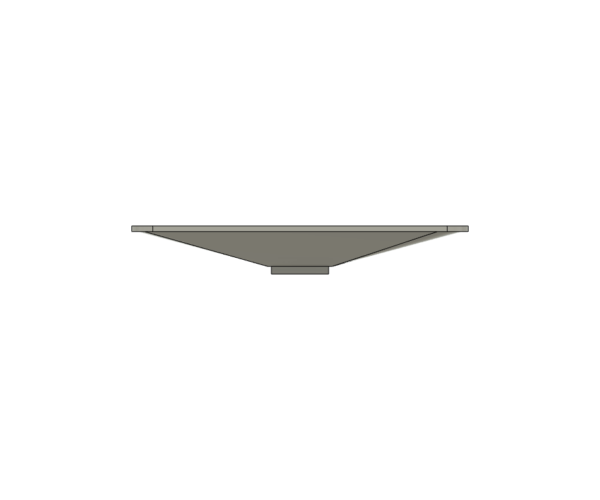Filament
If ti is outside and a hot environment, use PETG. If not, PLA is easier to print.
--------------------
Chuck H
3D Printer Review Blog
If the angle of overhang exceeds 45 degrees the surface will become loose: You can go steeper before the effect is significant but 60 degrees is about the limit. Unless you use an MMU and soluble supports any supported surface will also be loose.
I'm guessing the interior surface is the important one for function; if so I would print this working-side up, as you have pictured it, and accept that the lower surface will be of lower quality.
Cheerio,
Brim, no support. Rotate 90 degrees
That should not require any support - bed it on edge, add a 3mm brim, and orient it so the edge it is standing on is parallel to the Y axis rods. That leaves you with the manageable bridge (the square hole) or for a perfect bridge, add in a knock-out piece to fill the hole.
Engineering wise, that shallow angle is not going to be much of a "hopper" effect.
Thank you all!
@cwbullet,
yes the final part is going to be PETG, it is going to be outdoor and in contact with food.
@Diem,
I do have the MMU, I will try a soluble filament.
@Dan Rogers,
I did try splitting the part in 2 and rotate 90 degrees, with no support, and in PETG. The parts warped a bit but they fits in the assembly.
I will try your suggestion, definitely a brave thing to try 😉
By the way, the sloop of this hopper is designed and tested for 3.5mm round pallets, they roll nicely.
RE: solubles
If you've not done solubles before with the MMU be prepared for some trial and error. you have to purge a LOT of the soluble on changing to the non-soluble material, I generally do at least 250 to make sure none of the soluble gets mixed into the printed part.
I've had decent success with Verbatim BVOH and PETG. I would STRONGLY suggest getting a filament dryer if you don't have one, and one that's active circulation. You'll want to use one of the soluble interface profiles.
My biggest gripe with solubles is that it makes the wipe tower super messy. Messy meaning filament flakes off during print because of the way it lays down the soluble and non-soluble filament.
It can definitely work, but it just takes some work. If you've gotten the MMU working at all you're familiar with the concept 🙂

